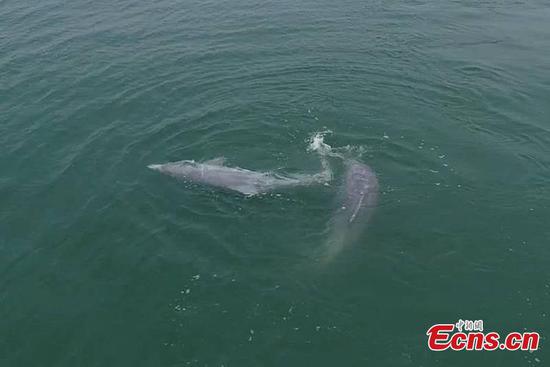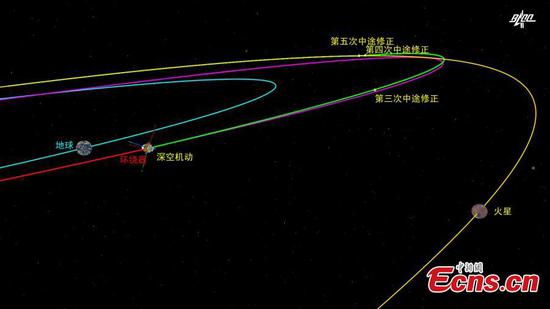
Photo taken on Aug 27, 2019 shows China's Five-hundred-meter Aperture Spherical Radio Telescope (FAST) in Southwest China's Guizhou province. (Photo/Xinhua)
Astronomers using sensitive Chinese telescope achieve breakthrough
Astronomers using China's Five-hundred-meter Aperture Spherical Telescope have made major progress in solving the mysteries of extremely short but powerful flashes in the sky known as fast radio bursts, according to studies published in the journal Nature.
Data collected by the world's largest single-dish radio telescope suggests fast radio bursts originate from activity in the magnetosphere of neutron stars-the super-dense remnants of massive stars. The finding concludes a decadelong scientific debate on the origin of the phenomenon, which was first discovered in 2007.
Scientists have also hypothesized that most fast radio bursts may be emitted by a special class of neutron stars called magnetars that have extremely strong magnetic fields. The most magnetic stars in the universe, they have a field strength up to a thousand trillion times stronger than that of Earth.
However, there may also be other origins, they added.
"Fast radio bursts are one of the frontiers in astronomy because they are full of interesting questions to be answered," said Han Jinlin, a chief researcher at the National Astronomical Observatories of the Chinese Academy of Sciences.
"Unlike other celestial objects that can be tracked and monitored, FRBs blink and disappear within thousandths of a second, making them a notoriously elusive and difficult phenomenon to study."
He said some fast radio bursts can even recur after some time, which is a further puzzle for scientists.
"Only in the past few years have scientists known how to locate FRBs, but it remains a challenge to decipher their signals and understand the physics behind them because many telescopes simply aren't sensitive enough," Han said.
That is where FAST-the world's most sensitive single-dish radio telescope-can shine, said Lee Kejia, an astronomy professor at Peking University, as it is 2.5 times more sensitive than the 305-meter-diameter Arecibo telescope in Puerto Rico, which is in second place.
Lee and his team used the telescope in Guizhou province to observe a repeating fast radio burst called FRB180301 and discovered that the radiation of the source has "very diverse polarization angle swings", meaning that the radiation is affected by the magnetosphere.
This supports the hypothesis that fast radio bursts originate from complex processes in a neutron star's magnetosphere, rather than from the collision of accelerated particles, according to a study published in Nature last month.
Another study published in Nature on Thursday said that Chinese astronomers used FAST to observe a magnetar called SGR 1935 2154, and concluded that the hyper-magnetic objects could be a major source of fast radio bursts.
Jiang Peng, FAST's chief engineer, said the two discoveries are in keeping with public expectations that the telescope will deliver influential and original breakthroughs.
FAST has discovered more than 240 pulsars-super dense stars that emit electromagnetic beams at precise intervals, Jiang said. Pulsars are a popular research subject as the "cosmic lighthouses" allow scientists to study extreme states of matter, measure cosmic distances and track time in an ultra-precise way.
Scientists have published over 40 high-quality papers using data collected by FAST, and Chinese astronomers are lining up to apply to use it for their research, he said.
"Not only does it play a significant role in our nation's effort to create major original breakthroughs in astronomy, but the engineering techniques and materials used to create this monumental infrastructure can also serve other industries, such as high-precision surveying," he said.


















































